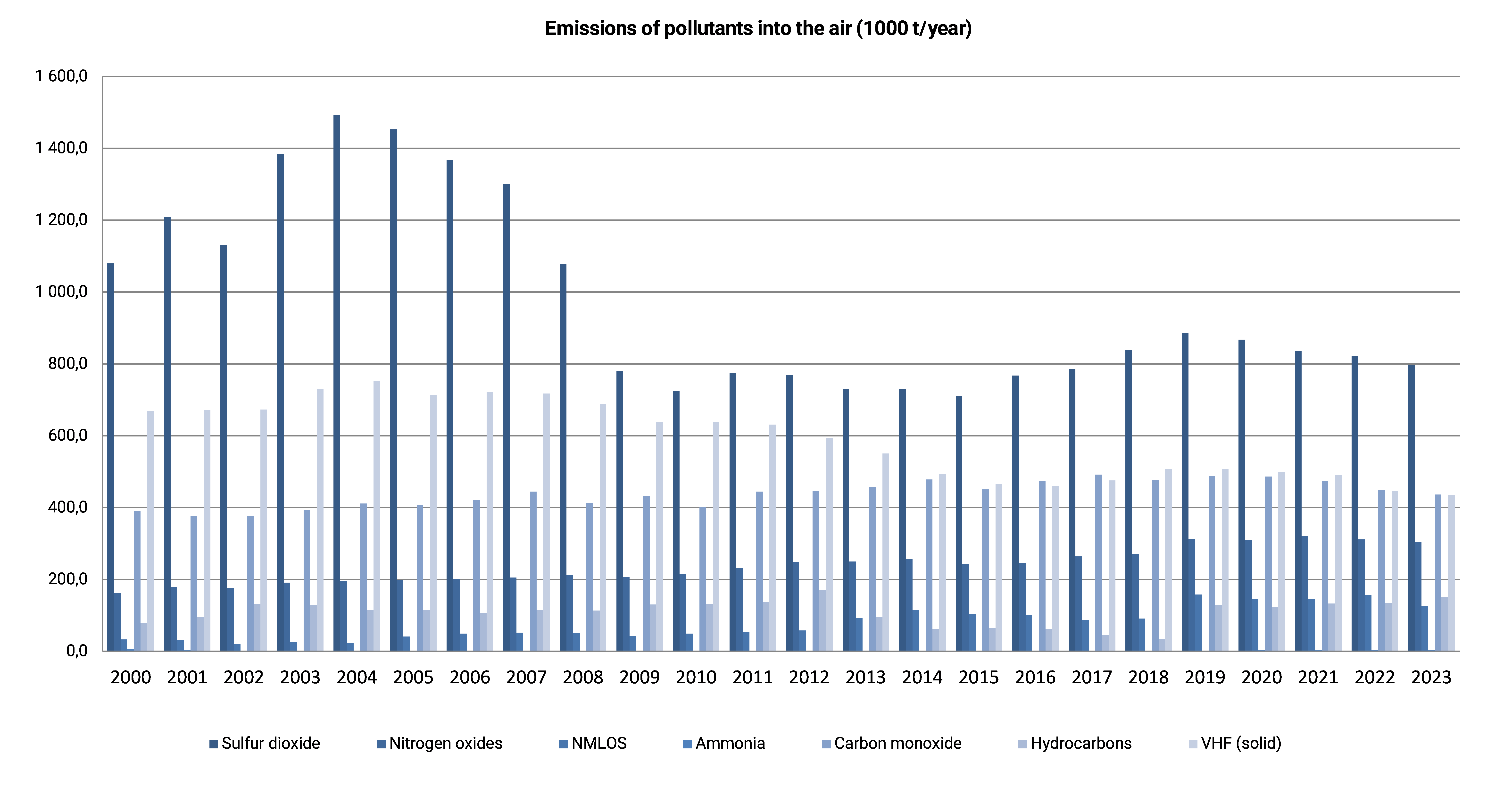Brief description:
This indicator indicates the degree of existing and expected anthropogenic impact of harmful substances on the environment, and also allows you to determine the degree of achievement of the target values. This indicator makes it possible not only to determine the degree of anthropogenic pressure on atmospheric air in General, but also allows you to assess the impact on the environment from stationary and mobile sources, including by type of economic activity (in particular: energy, transport, industry, agriculture and waste management, etc.).
Methodology:
The indicator is formed in accordance with the "Methodology for the formation of environmental statistics indicators" approved by Order No. 223 of the Acting Chairman of the Statistics Committee of the Ministry of National Economy of the Republic of Kazakhstan dated December 25, 2015.
The Bureau of National Statistics of the Agency for Strategic Planning and Reforms of the Republic of Kazakhstan is responsible for generating data on emissions of pollutants into atmospheric air from stationary sources. Information is generated based on the results of national statistical observation in the form 2-TP air (annual) «Report on atmospheric air protection».
Unit:
It is measured in thousands of tons or kilograms of the corresponding substance per year, as well as per unit of area, per unit of GDP (PPP) at constant prices in 2021 and per capita.
